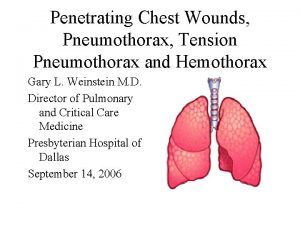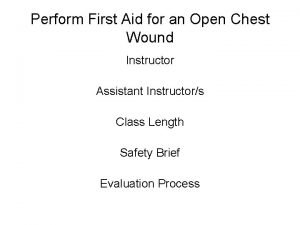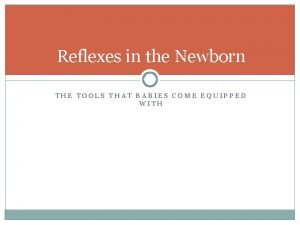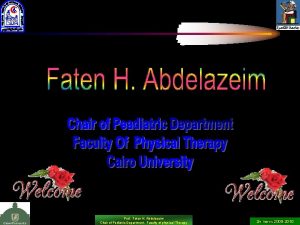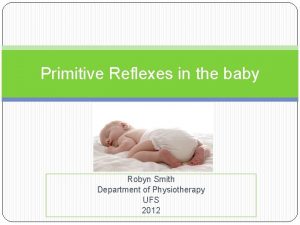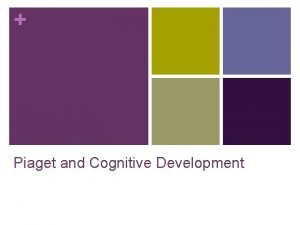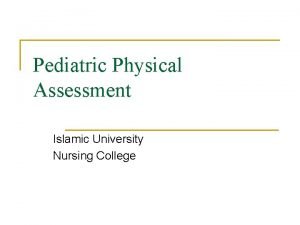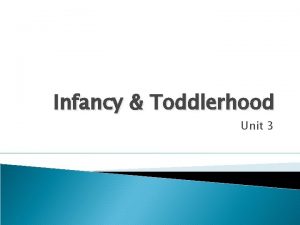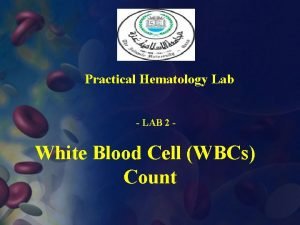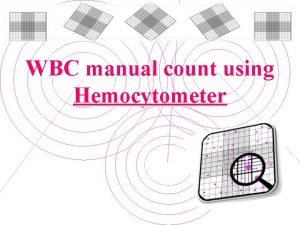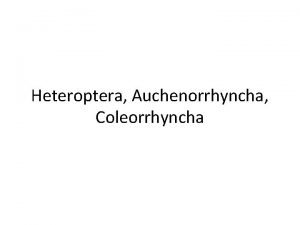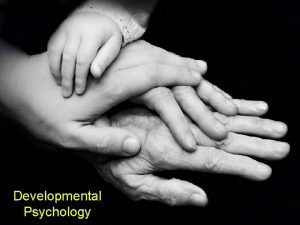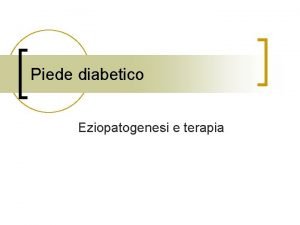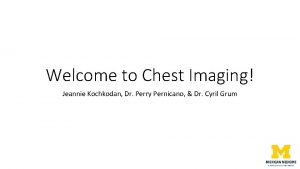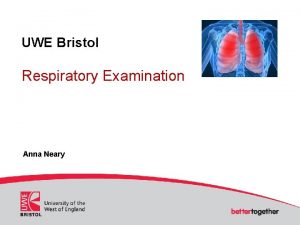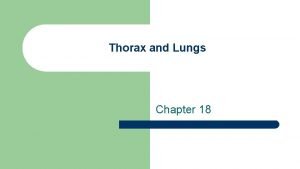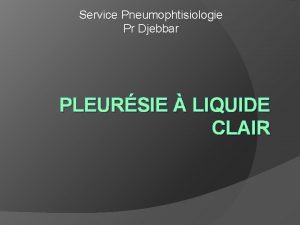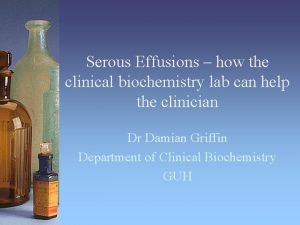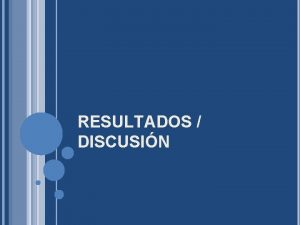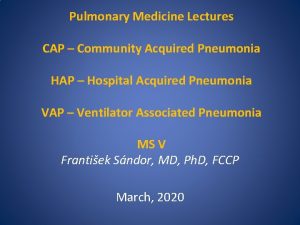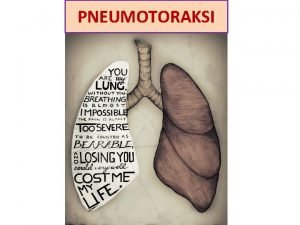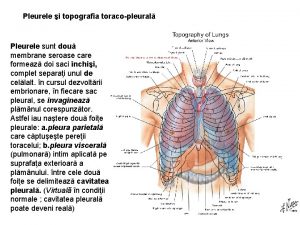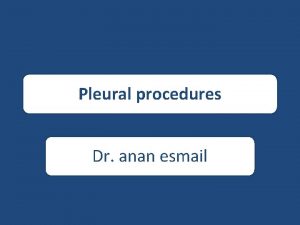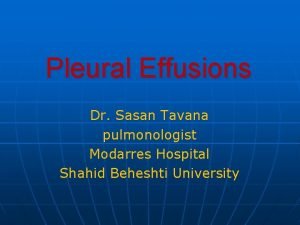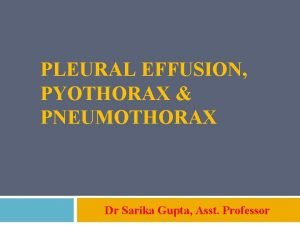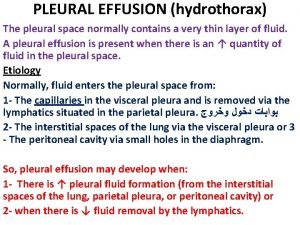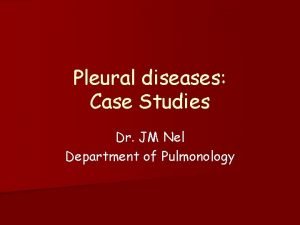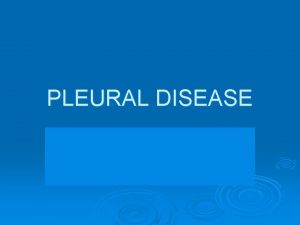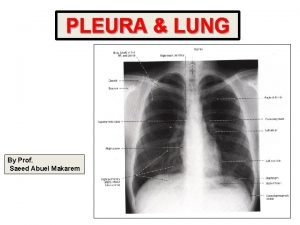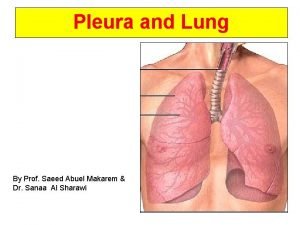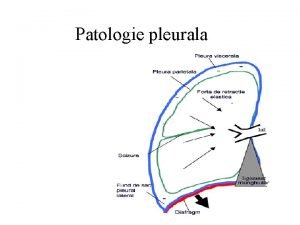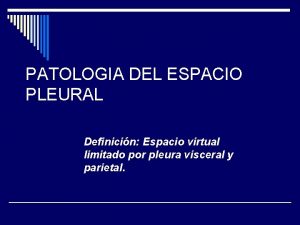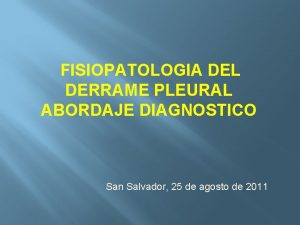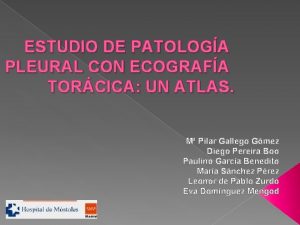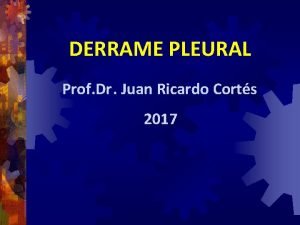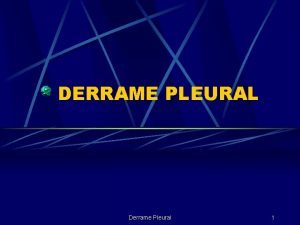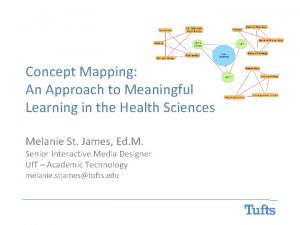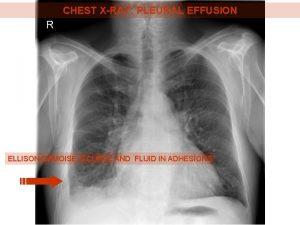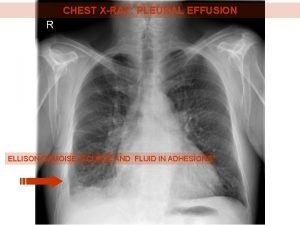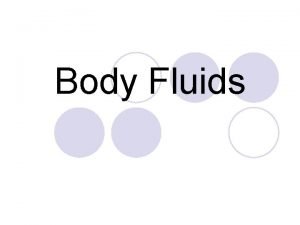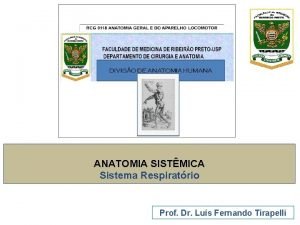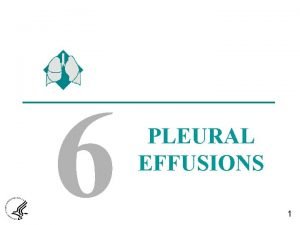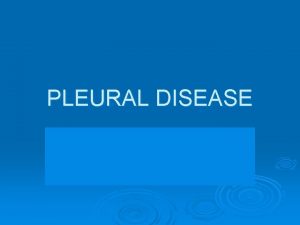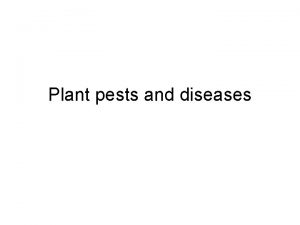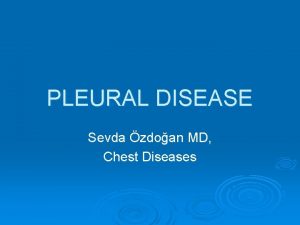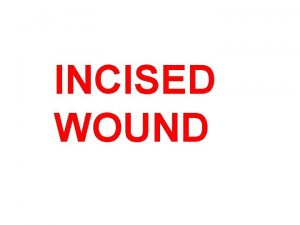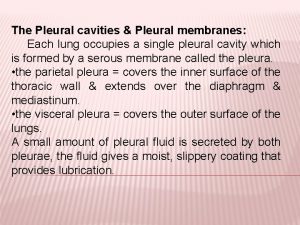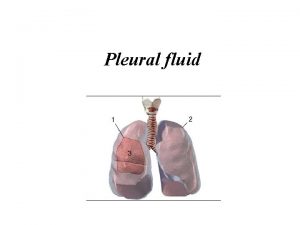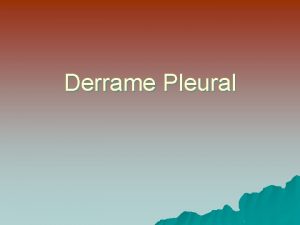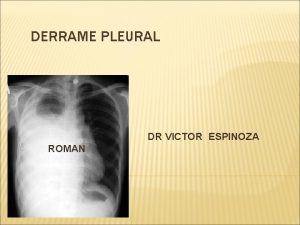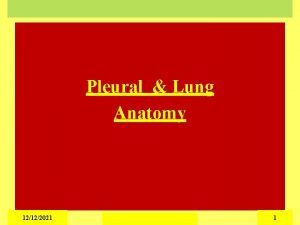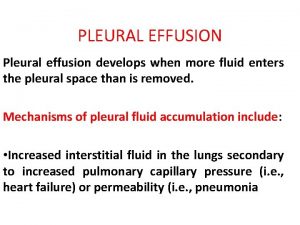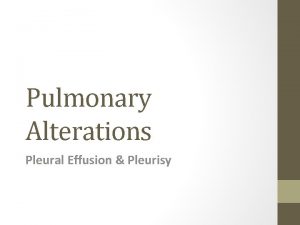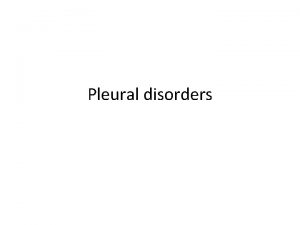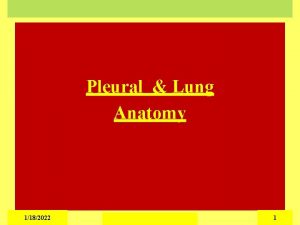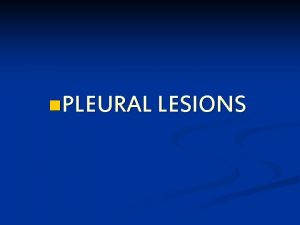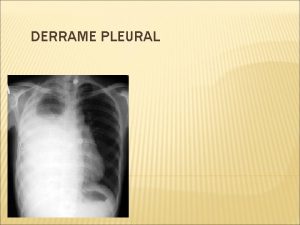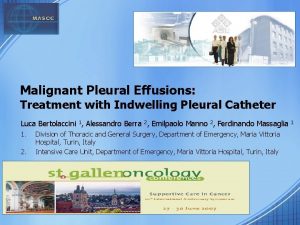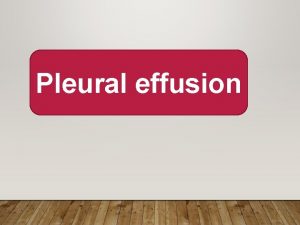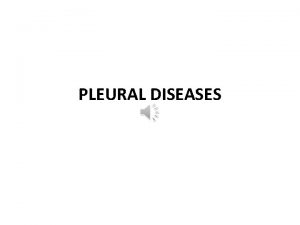Respiratory System Respiratory System Sucking chest wound Pleural





















































- Slides: 53

Respiratory System

Respiratory System • Sucking chest wound – Pleural cavity _________ – Lung collapses as air pressure difference between pleural cavity and outside kept constant by wound (air flows in and out of wound)

Respiratory System • Boa constrictors

Respiratory System • Gas transport: overall plan – 1) Heart pumps low oxygen blood to lungs – 2) Oxygen in, carbon dioxide out (external respiration) – 3) Blood returns to heart and is pumped to body – 4) Oxygen out of blood, carbon dioxide in (internal respiration)

Respiratory System • Gas transport – Oxygen non-polar: not very soluble in _____ – Hemoglobin: protein that binds with oxygen. Contains Fe in each chain, which binds oxygen.

Respiratory System • Red blood cell or rbc (ethrythrocyte) contains 300 million hemoglobin molecules. Each molecule binds to 4 oxygen molecules. 1200 million oxygen molecules on 1 rbc!

Respiratory System • Carbon dioxide transported in 3 ways: – 1) Dissolved in plasma (67% of CO 2) as bicarbonate (HCO 3 -). – CO 2 + H 2 O forms H 2 CO 3 which forms H+ and HCO 3– This also affects p. H of blood. More CO 2 means lower blood p. H.

Respiratory System • Carbon dioxide transported in 3 ways: – 2) Bound to hemoglobin (25%). Binds to amino acids, not to _______. – 3) Dissolved in plasma as CO 2 (8%).

Respiratory System • Control of breathing: – Brain stem center monitors blood p. H – If p. H drops, then too ______ CO 2 in blood – Breathing rate increased in response.

Circulatory System

Circulatory System • Functions: – 1. Transport of materials (gases, nutrients, wastes) – 2. Temperature regulation – 3. Carries _______ hormones – 4. Protection (immune defense, blood clotting)

Circulatory System • Types in animals: – None! Phylum Platyhelminthes, Nematoda, Echinodermata, etc. Circulation can occur (ex, nematodes) due to body movements.

Circulatory System • Types in animals: – Open. Phylum Arthropoda, Mollusca. No capillaries: have sinuses into which blood flows from vessels.

Circulatory System • Types in animals: – Closed. Phylum Annelida, Chordata. Blood always stays in vessels as it circulates.

• Vessels: Circulatory System – Arteries (carry blood away from heart): large diameter – Thick elastic muscular walls. Can handle high blood pressure – Connective tissue sheath outside, _______ inside.

Circulatory System • Vessels: – Arterioles (carry blood away from heart): small diameter (microscopic) – Smooth muscle controls blood flow. Vasoconstriction is contraction to cut flow down – Vasodilation is relaxation to increase flow.

Circulatory System • Vessels: – Precapillary sphincters: _____ muscle valves on some arterioles near capillaries. Can cut off blood flow – Important: most capillaries not open simultaneously (blood pressure would drop critically). Parts take turns.

Circulatory System • Vessels: – Capillaries: very small diameter (8 micrometers: rbc only 5 -7 micrometers wide). Where most exchange of materials takes place – Every cell in body within _______ micrometers of a capillary! – 250, 000 capillaries in area size of little fingernail.

Circulatory System • Vessels: – Capillaries connect arteriole to ________ – No smooth muscle, just endothelium (note diagram in error: capillary on upper right).

• Vessels: Circulatory System – Venules (carry blood toward heart): small diameter (microscopic) – Smooth muscle thin. Pressure low (____% of arteries). Connective tissue sheath outside, endothelium inside – Veins (carry blood toward heart): large diameter Note: labels for vein and capillary are reversed in diagram

Circulatory System • Vessels: – Veins often have one-way valves. Muscle contractions can help move blood through valves.

Circulatory System • Vessels: – Varicose veins: weakened valves in legs allow backflow. Small veins bulge with venous blood.

Circulatory System • Lymphatic system: open circulatory system

Circulatory System • Blood plasma in tissues (_________ fluid) bathes tissues. Not all returns to capillaries • Lymphatic capillaries, vessels, nodes, organs (nodes) • Capillaries collect fluid (lymph) and pass to larger lymph vessels

Circulatory System • Lymphatic system vessels: little smooth muscle in walls • Have series of one-way valves. Fluid moves mainly due to contraction of nearby _________. Fluid moves left to right here

Circulatory System • Lymph system functions • 1) Drain excess fluid from tissues (recall elephantiasis, where nematodes clog system)

Circulatory System • Lymph system functions • 2) Involved in fat absorption from intestine (covered).

Circulatory System • Lymph system functions • 3) Fights infection at lymph nodes (about 100 in human body) – Bean shaped, various places.

Circulatory System • Lymph system functions • 3) Nodes produce B- and T-lymphocytes. These produce antibodies that detect foreign materials (ex, bacteria) – Nodes become swollen in areas downstream of infection as lymphocytes attack invaders

Heart • Major organ of circulatory system • Enclosed in membrane called __________ • Pumps blood into arteries.

Heart • Humans have 4 chambered heart that functions in 2 sets of 2 chambers (form 2 myocardia) • Chambers called atria receive blood, pump it into more muscular chambers called ventricles, which send blood away from heart.

Heart • One set receives deoxygenated blood and sends it to lungs (pulmonary circulation) – Right atrium (receives deoxygenated blood) from superior (from head) and inferior (from lower body) vena cava – Right ventricle (pumps it to lungs) via pulmonary artery.

Heart • Second set receives oxygenated blood from lungs and sends it to body (systemic circulation) – Pulmonary vein brings oxygenated blood to left atrium – Left ventricle pumps oxygenated blood to body via _______.

Heart • Note valves: prevent backflow of blood when chamber contracts • Tricuspid valve: between right atrium and ventricle • Bicuspid valve: between left atrium and ventricle.

Heart • Note valves: prevent backflow of blood when chamber contracts • Semilunar valves (aortic and pulmonary): between ventricles and arteries that receive blood from them.

Heart • Chordae tendinae and papillary muscles keep bicuspid and tricuspid valves taught.

Heart • Beating controlled by special groups of cardiac muscle cells (called nodes) that generate impulse • Other cells then transmit impulse to one another via intercalated discs.

Heart • SA node (right atrium) originates _____ • Causes atria to contract (ventricle relaxed at this time).

Heart • AV node receives stimulus • Sends to ventricle cells through specialized cardiac muscle cells called Purkinje fibers • Ventricle cells then contract (after atria relax).

Heart • Heart sound: Lub-dub • Lub: biscuspid and tricuspid valves closing as ventricles contract • Dub: aortic and pulmonary semilunar valves closing as _________ re-fill.

Heart • Autonomic nervous system influences heartbeat rate – Sympathetic nerves: accelerate – Parasympathetic nerves: slow rate – Some hormones (ephinephrine = adrenalin): accelerate.

Blood • Connective tissue: cells in matrix • Matrix: plasma.

Blood • Plasma components: – 1. Water (92%) – 2. Salts (Ca, K, Na) – 3. Proteins • globulins: large immunoglobins (antibodies) • albumins: osmoregulation (most abundant blood protein) • fibrinogen: helps clotting. Serum is plasma minus fibrinogen – – – 4. Glucose (regulated by glucagon and insulin) 5. Glycerol and fatty acids 6. Hormones 7. ______ (nitrogenous waste) 8. Carbon dioxide and bicarbonate

Blood • Cells (called formed elements) – Erythrocytes (red blood cells: rbcs): no nucleus, biconcave disc shape, flexible. Origin: ______ bone marrow.

Blood • Cells (called formed elements) – Leukocytes (white blood cells: wbcs): have nucleus. <1% of blood cells.

Blood • Cells (called formed elements) – Granular leukocytes (granulocytes) • Lobed nucleus and look grainy • Phagocytic cells. Fight infection, produced by ______ marrow • Types: neutrophils (stain well with neutral p. H dye), basophils or mast cells (stain well with basic p. H dye), eosinophils (stain well with eosin).

Blood • Cells (called formed elements) – Agranular leukocytes • Large nucleus, no granules present • Formed in lymph nodes • Types: Monocytes (become macrophages in tissues, largest phagocytic cells, nucleus kidney bean shaped), Tlymphocytes (phagocytes), B-lymphocytes (make __________)

Blood • Cells (called formed elements) – Thrombocytes (platelets) • No _______. Fragments of red bone marrow cells • Function in clotting of blood.

Blood Summary • Cells (called formed elements) – Thrombocytes (platelets) • No nucleus. Fragments of red bone marrow cells • Function in clotting of blood

Blood Clotting • Blood vessel wall broken • Platelets stick to each other and to break. Release clotting factors.

Blood Clotting • Protein called prothrombin converted to thrombin, which causes fibrinogen in plasma to become fibrin (protein threads) • These threads bind together platelets and blood cells to make ______.

How Phagocytic WBCs work • • Damage to tissues Mast cells release histamine Causes blood vessels to dilate Increases permeability of capillaries.

How Phagocytic WBCs work • Neutrophils and _______ stick to lining of capillary • Squeeze through wall into tissue • Locate and digest invading cells.
 Pneumothorax
Pneumothorax Open chest wound first aid
Open chest wound first aid Conducting zone of the respiratory system
Conducting zone of the respiratory system Sucking and suckling
Sucking and suckling Sucking reflex
Sucking reflex Child reflexes chart
Child reflexes chart Placing reflex
Placing reflex Parachute reflex in newborn
Parachute reflex in newborn Concrete operational stage
Concrete operational stage Pediatric physical assessment nursing
Pediatric physical assessment nursing Jawless fish characteristics
Jawless fish characteristics Rooting reflex
Rooting reflex Wbc pipette wikipedia
Wbc pipette wikipedia Rbc thoma pipette
Rbc thoma pipette Pentatomomorpha
Pentatomomorpha Moro reflex definition psychology
Moro reflex definition psychology Digestive system respiratory system and circulatory system
Digestive system respiratory system and circulatory system University of texas wound classification system
University of texas wound classification system Tiny air sacs at the end of the bronchioles
Tiny air sacs at the end of the bronchioles Circulatory system and respiratory system work together
Circulatory system and respiratory system work together Meniscus sign pleural effusion
Meniscus sign pleural effusion Vocal fermitus
Vocal fermitus Charting normal lung sounds examples
Charting normal lung sounds examples Throax
Throax Festonnement pleural
Festonnement pleural Pleural fluid color chart
Pleural fluid color chart Angulos costofrenicos
Angulos costofrenicos Pleural empyema
Pleural empyema Aspirimi i rrugeve te frymemarrjes
Aspirimi i rrugeve te frymemarrjes Foita viscerala
Foita viscerala Triangle of safety chest tube
Triangle of safety chest tube Dr sasan beheshti
Dr sasan beheshti Light's criteria
Light's criteria Loculated pleural effusion causes
Loculated pleural effusion causes Transudate vs exudate
Transudate vs exudate Pleural aspiration site
Pleural aspiration site Serosangineous
Serosangineous Mediastinum structures
Mediastinum structures Oblique and horizontal fissures
Oblique and horizontal fissures Egofonie
Egofonie Grados de hemotorax
Grados de hemotorax Quilotorax y pseudoquilotorax
Quilotorax y pseudoquilotorax Signo del murcielago ecografia
Signo del murcielago ecografia Double-layered pleural membrane
Double-layered pleural membrane Liquido pleural color marron
Liquido pleural color marron Liquido pleural color marron
Liquido pleural color marron Concept map for mi
Concept map for mi Ellis curve radiology
Ellis curve radiology Pleural effusion ellis curve
Pleural effusion ellis curve Derrame pleural rx
Derrame pleural rx Pleural tapping notes
Pleural tapping notes Pleuras
Pleuras Normal pleural ldh
Normal pleural ldh Cloisonnement pleural
Cloisonnement pleural
